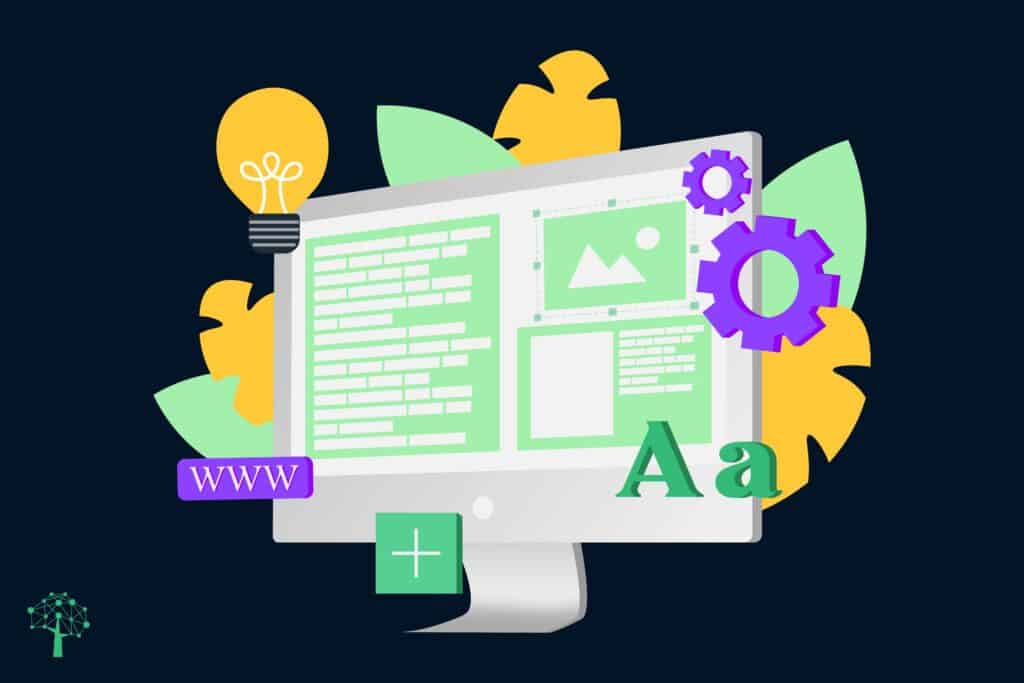CAD has risen as a digital Michelangelo, sculpting intricate 2D and 3D designs with unparalleled precision and efficiency. Beyond the sleek interface and dazzling visuals lies a treasure trove of advantages that have redefined the way we design, build, and innovate.
So, what exactly are the advantages of CAD software? Why, in this age of digital innovation, has it become an indispensable tool across countless industries? Let’s unveil the hidden gems of CAD, exploring the myriad benefits it offers to architects, engineers, product designers, and anyone with a spark of creativity and a vision to bring to life.
Table of Contents
What is CAD?
CAD, short for Computer-Aided Design, is a software program used to create visual representations of objects in 2D and 3D models before they’re physically built.
CAD has revolutionised how we design and create everything from buildings and cars to furniture and video game characters. Imagine it as a digital sculpting tool or drawing board but with the precision and versatility of a computer.
Functionality of CAD
At its core, CAD software serves as a virtual canvas, allowing users to draft intricate 2D and 3D designs with unparalleled accuracy. 2D drawings are like blueprints, while 3D models are like virtual prototypes.
The functionalities extend beyond traditional design, enabling users to simulate, analyse, and iterate designs seamlessly. CAD acts as a dynamic hub for visualising concepts, ensuring precision in every aspect of the design process.
In today’s dynamic landscape, Computer-Aided Design stands as a linchpin in various industries, reshaping the way professionals approach engineering, architecture, product design, and graphic design.
Advantages of CAD Software
The benefits of CAD software are numerous and far-reaching, impacting not just the design process itself but also the entire product lifecycle. Here are some key advantages of using CAD software.

Increased Productivity
- Repetitive tasks like drawing lines, adding dimensions, and generating reports can be automated, saving designers and engineers valuable time.
- Changes made to one part of a model automatically update other parts, eliminating the need for manual rework.
- Design ideas can be quickly explored and tested through virtual prototyping, leading to faster decision-making and shorter development cycles.
Reduction of Costs and Errors
- Virtual prototyping with CAD software reduces the need for expensive and time-consuming physical prototypes.
- Accurate models and simulations help identify and eliminate potential manufacturing errors before production begins, reducing production costs.
- CAD models can be directly used to generate instructions for CNC machines and other manufacturing machinery, reducing errors and waste.
Improved Design Quality and Accuracy
- CAD software ensures accuracy in measurements and tolerances, minimising errors and rework during manufacturing.
- 3D models allow for better visualisation of designs, helping to identify potential flaws and improve functionality before physical prototypes are built.
- CAD software can be used to simulate real-world conditions, such as stress, heat, and fluid flow, helping to optimise designs for performance and durability.
Enhanced Information Sharing and Collaboration
- CAD models can be easily shared and reviewed by different stakeholders, regardless of their location or software platform.
- Multiple users can work on the same model simultaneously, facilitating better communication and teamwork.
- CAD software generates detailed drawings and reports that document the design intent and specifications, ensuring clarity and consistency throughout the project.
Integration with CAM and CAE Packages
- CAD software seamlessly integrates with Computer-Aided Manufacturing (CAM) and Computer-Aided Engineering (CAE) packages. This integration makes the transition from design to manufacturing and analysis smoother, allowing engineers to import designs for further optimisation.
- Over 50 different file types are typically supported, facilitating a smooth workflow and ensuring precise analysis of designs.
Importance of CAD in Various Industries
As technology continues to advance, CAD remains a linchpin in driving efficiency and pushing the boundaries of what can be envisioned and created across diverse sectors. Its ability to improve productivity, facilitate collaboration, and produce detailed designs makes it indispensable in today’s world.
Here is an explanation of how important it is to use CAD software in various industries.
Automotive Sector
- From sleek car bodies to fuel-efficient engines, CAD software helps automotive engineers optimise designs for both aesthetics and performance.
- Virtual crash tests allow engineers to identify and address potential safety concerns before physical prototypes are built, making cars safer for everyone.
- CAD models facilitate efficient production processes and enable customisation options for consumers, making car buying a more personalised experience.
Aerospace Industry
- CAD software helps engineers design aircraft and spacecraft with optimal aerodynamic shapes, reducing drag and fuel consumption for improved efficiency and performance.
- Complex simulations can be used to test designs under extreme conditions, ensuring the structural integrity and safety of aircraft before they take to the skies.
- Virtual prototypes of aircraft components can be quickly created and tested, accelerating the design and development process and reducing the need for expensive physical prototypes.
Architecture
- CAD software allows for creating realistic 3D models of buildings, bridges, and other structures, enabling visualisation and clash detection before construction even begins.
- Clients and stakeholders can walk through virtual models of buildings, providing valuable feedback and fostering better collaboration throughout the design process.
- Simulating real-world conditions like stress, wind, and earthquakes helps engineers optimise designs for strength and resilience.
Medical Field
- CAD software allows for the creation of custom prosthetics and other medical devices that are precisely tailored to individual needs.
- Surgeons can use 3D models of organs and tissues to plan complex surgeries with greater precision and minimise risks.
- CAD models can be used to simulate molecular interactions and design new drugs and treatments, accelerating medical advancements.
Film and Animation
- The stunning visuals and fantastical creatures we see on screen are often brought to life with the help of CAD software. 3D models and animations created in CAD software form the foundation for the special effects that mesmerise audiences worldwide.
- From designing detailed landscapes in video games to crafting lifelike characters in animated films, CAD software plays a major role in creating immersive and believable worlds for audiences to explore.
- By allowing artists and designers to visualise their ideas clearly and iterate quickly, CAD software empowers them to tell stories in new and innovative ways, pushing the boundaries of what’s possible on screen.
Fashion Design
- CAD software allows fashion designers to sketch out ideas digitally, manipulate patterns with precision, and create 3D models of garments even before touching a fabric. This speeds up the design process and allows for virtual try-ons and fittings.
- 3D simulations and virtual prototyping help designers optimise fabric usage, reduce waste, and explore sustainable materials before production begins.
- By incorporating body scans and individual measurements, CAD can be used to create custom-fit garments that perfectly flatter the wearer. This opens up opportunities for personalised fashion experiences and caters to diverse body types.
Interior Design
- CAD software allows interior designers to create detailed 3D models of spaces, complete with furniture, lighting, and textures. Clients can virtually walk through these models, providing feedback and ensuring the design aligns with their vision.
- CAD helps designers maximise space utilisation, optimise furniture placement, and ensure efficient flow within a room. This is particularly valuable in smaller spaces or complex layouts.
- CAD software can simulate the effects of different lighting scenarios, allowing designers to create optimal lighting plans that enhance the ambience and functionality of a space.
How CAD is Implemented

Implementing CAD requires careful planning and execution, involving various aspects beyond simply purchasing the software. Here’s a breakdown of the key steps.
1. Needs Assessment
- Identify the specific tasks you want CAD to improve or automate. Consider the complexity of your projects and the level of detail needed in your models.
- Assess your team’s existing CAD knowledge and identify any training needs to ensure everyone can use the software effectively.
- Define clear objectives and desired outcomes for implementing CAD. This will guide your selection and implementation process.
2. Software Selection
- Research different CAD software options. Consider factors like cost, features, compatibility with your existing software, and ease of use. Look for software that aligns with your specific needs and industry.
- Compare features and analyse the strengths and weaknesses of different software options, focusing on features crucial to your workflow and project requirements.
- Choose software with reliable support and training programs to ensure your team can get help when needed and learn the software effectively.
3. System Integration and Hardware Setup
- Make sure your computers meet the minimum system requirements for the chosen CAD software.
- Establish a system for storing and accessing CAD files, including version control and collaboration tools.
- Consider high-performance computers, graphics cards, and other hardware depending on your project requirements and complexity.
4. Training and Support
- Invest in training programs or hire trainers to ensure your team can use the software effectively. Offer different training levels based on individual skill levels.
- Provide ongoing support for your team, either through internal IT staff, external consultants, or the software vendor’s support services.
5. Customisation and Optimisation
- Adjust the software settings and user interface to fit your team’s preferences and optimise the workflow for efficiency.
- Create standard templates for common tasks and components to ensure consistency and reduce repetitive work.
- Track your progress towards your goals and identify areas for improvement.
Final Thoughts
So, why do we need CAD? Because it empowers us to bring our ideas to life with accuracy and innovation. The advantages of CAD software are evident in its precision, efficiency, and collaborative capabilities.
If this exploration piqued your interest, delve deeper into our website for the evolution of technical drawings from Da Vinci to CAD and other resources. Explore further to enhance your understanding of cutting-edge technologies and stay ahead in the ever-evolving world of digital design and drafting.
FAQs
1. Is CAD difficult to learn?
The learning curve for CAD can vary depending on your prior experience and the software you choose. Some beginner-friendly software like SketchUp can be picked up quickly. Others, like SolidWorks, have a steeper learning curve but offer more advanced capabilities.
However, with dedication and practice, anyone can learn CAD and unlock its potential. Many online resources, tutorials, and courses are available to help you get started.
2. Is CAD expensive?
The cost of CAD software varies widely. Some free or open-source options are available but may have limited functionality. Popular commercial software like AutoCAD can be expensive, with subscription fees or perpetual licences.
3. Can any computer run CAD?
Unfortunately, not just any computer can effectively run CAD software. While basic 2D drafting might be possible on older or less powerful machines, demanding 3D modelling and complex simulations require specific hardware specs to function smoothly.
Most CAD software runs on Windows 10 or 11, although some offer compatibility with macOS and Linux. A modern multi-core processor with a clock speed of at least 3 GHz is recommended. Aim for at least 16GB of RAM, and 32GB or more is ideal for complex projects.
4. What are the advantages of AutoCAD?
AutoCAD allows for accurate modelling, while automation tools enhance productivity. AutoCAD promotes effective collaboration through shareable designs, integrates seamlessly with other Autodesk products, and streamlines documentation processes, contributing to its status as a leading CAD solution.
5. Where can I learn CAD?
You can learn CAD through online courses on platforms like Udemy, Coursera, or LinkedIn Learning, official tutorials from software providers, local colleges, community colleges, technical schools, CAD training centres, and self-study using software documentation.


